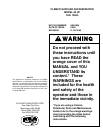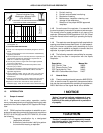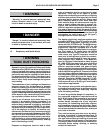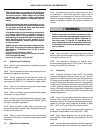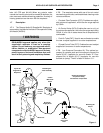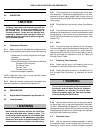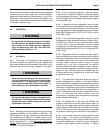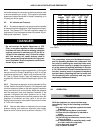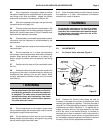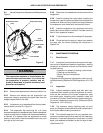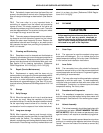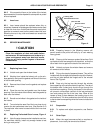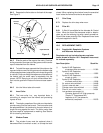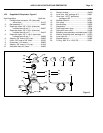
APOLLO 60 HP SUPPLIED-AIR RESPIRATOR
Page 3
This manual does not contain all the health and
safety requirements regarding toxic and hazard-
ous dust exposure. Obtain copies of the OSHA
regulations and consult a safety professional
and/or industrial hygienist for complete require-
ments.
Within this manual we refer to hazardous or con-
taminated environments. These environments can
be any place around the blast area that could
contain toxic or hazardous dust.
If these warnings are not completely understood,
or if further information is required, contact a
local OSHA office. If any personnel in the abra-
sive blasting vicinity cannot read or comprehend
these warnings and the entire content of this
instructional material, assign a qualified person
to instruct them.
Additional information on abrasive blasting haz-
ards titled “Preventing Silicosis and Death From
Sandblasting”, Publication No. 92-102, is avail-
able from:
Publications Dissemination, DSDTT
National Institute for Occupational Safety and Health
4676 Columbia Parkway
Cincinnati, OH 45226 (513) 533-8287
1.4 Cautions and Limitations
1.4.1 Not for use in atmospheres immediately danger-
ous to life or health.
1.4.2 Do not exceed maximum use concentrations es-
tablished by regulatory standards.
1.4.3 Air-line respirators can be used only when the
respirators are supplied with respirable air meeting the
requirements of CGA G-7.1 for Grade D or higher quality.
1.4.4 Use only the pressure ranges and hose lengths
specified in the instruction manual.
1.4.5 Failure to properly use and maintain this product
could result in injury or death.
1.4.6 All approved respirators shall be selected, fitted,
used, and maintained in accordance with MSHA, OSHA,
and other applicable regulations.
1.4.7 Never substitute, modify, add, or omit parts. Use
only exact replacement parts in the configuration as speci-
fied by the manufacturer.
1.4.8 Refer to users instructions, and/or maintenance
manuals for information on use and maintenance of these
respirators.
1.5 Special Use Limitations
1.5.1 Air pressure at the point of attachment (the point
of attachment is where the respirator supply hose is
connected to the respirable air source) must be main-
tained at pressures between the minimum pressure as
shown in the table in Section 4.2.4 and the maximum of
100 psi.
! WARNING
Failure to maintain the minimum pressure at the
point of attachment may reduce air flow below the
minimum flow required by OSHA. Reduced air
flow may result in ingress of hazardous toxic
dust, subjecting the user to immediate health and
life threatening poisoning and subsequent respi-
ratory disease.
1.5.2 Use no more than 12 sections of respirator hose to
obtain a total maximum length of up to 300 feet, as noted
in the table in Section 4.2.4.
1.5.3 The respirator is designed for specific use in
abrasive blasting applications. Do not use in other opera-
tions such as painting or welding.
1.6 Protection
1.6.1 Assigned Protection Factor (APF): The NIOSH
recognized assigned protection factor for any Type-CE
respirator (the Apollo respirator is a Type-CE respirator) is
25 times the permissible exposure limit (PEL). In other
words, CE respirators should be used only in atmospheres
in which the contaminant level does not exceed 25 times
the PEL. However, based upon the results of independent
testing, OSHA will treat the Apollo Supplied-Air Respirator
as having an APF of 1000 times the PEL
when used in lead
removal applications.
1.6.2 Head: The respirator protects the wearer’s head
and neck from impact and from abrasion caused by re-
bounding abrasive. The respirator meets physical require-
ments for industrial head protection as stated in ANSI
Z89.1-1997 as a Type I Class G protective helmet.
1.6.3 Face: The Apollo 60 inner lens meets impact and
penetration requirements under ANSI Z87.1-1989.
1.6.4 Eyes: Apollo respirators do not provide primary
eye protection. Wear approved eye protection with the
respirator.
1.6.5 Hearing: Noise generated by the Apollo respirator
and measured inside the helmet do not exceed 80 deci-



